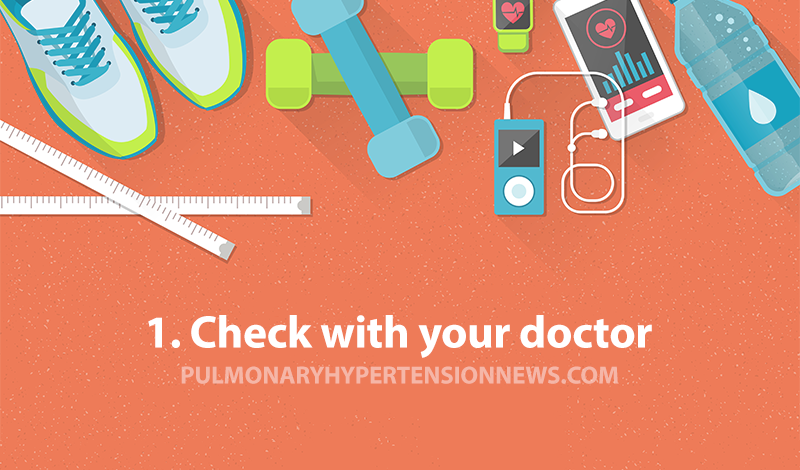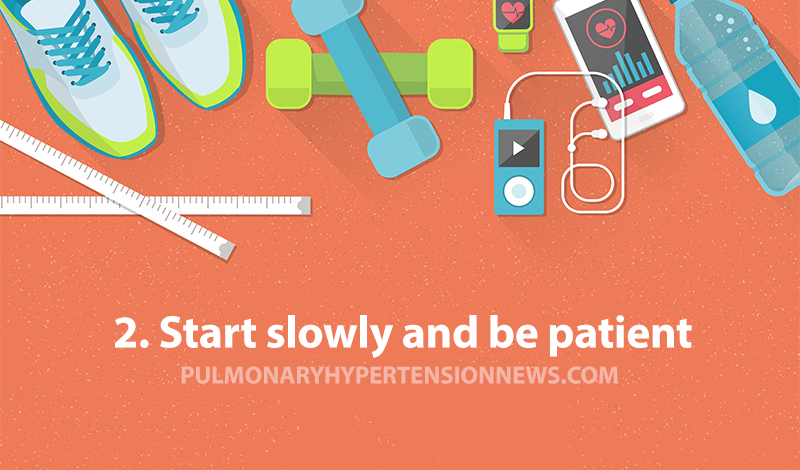9 Tips for Exercising With Pulmonary Hypertension
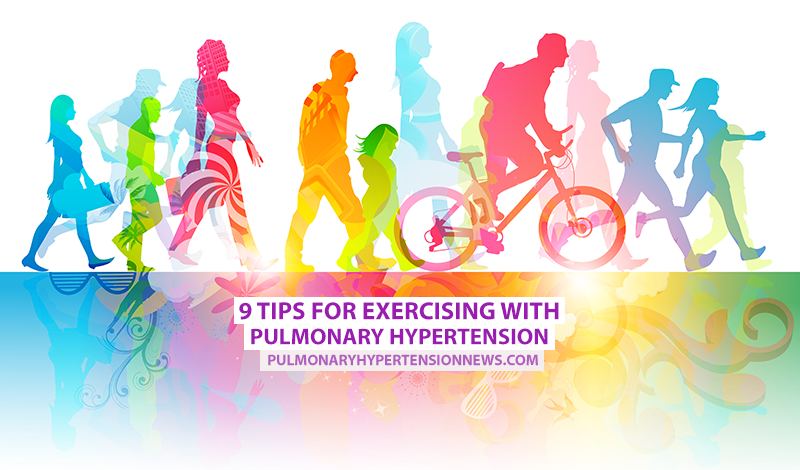
Pulmonary hypertension (PH) is a condition often misdiagnosed and with a very short lifespan if not treated in time. After getting an accurate diagnosis, it’s time to adapt to your new PH life and routine. Being such a serious condition, it can be scary to think about fitness while living with a disease that constantly leaves you breathless, but there are exercises that PH patients can safely do.
The Pulmonary Hypertension News forums are a place to connect with other patients, share tips and talk about the latest research. Check them out today!
We’ve put together these nine tips to help you safely exercise with pulmonary hypertension:
Even though exercise brings benefits to everyone, patients living with pulmonary hypertension may need some extra care when choosing a proper exercise. Make sure you consult with your physician to learn which types of exercise are best and how you can participate safely.
Exercising while living with a disease that affects your lungs may seem crazy. In fact, why would you put your body through effort when you’re breathless most of the time anyway? Even though it might seem scary at first, the fact is that exercise is good for everyone. You just have to start slowly, be patient and find an exercise program that fits your needs.
Check out Chloe Temtchine’s tips on how to exercise when you have pulmonary hypertension.
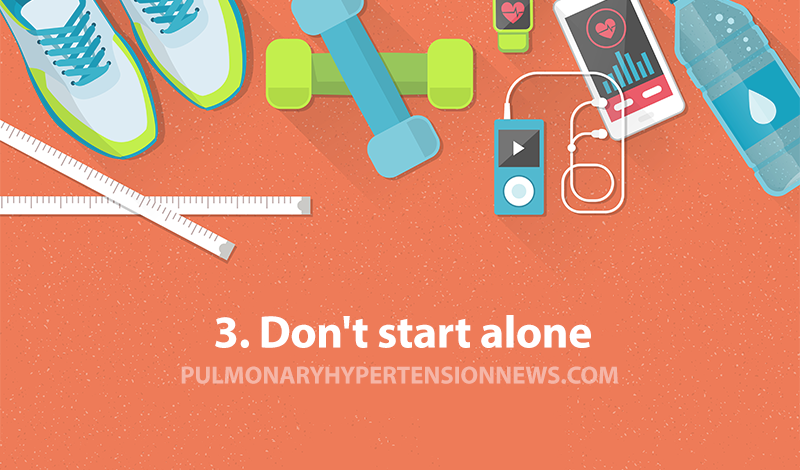
Let’s be honest: nobody likes to exercise alone. In fact, most people give up exercising because they don’t feel motivated when they don’t have anyone holding them accountable. So if you’re just starting to exercise, make sure you do it with a friend, a family member or someone you feel comfortable with.
If you don’t suffer from PH but you have a friend that does, find out more on how you can support a friend with pulmonary hypertension.
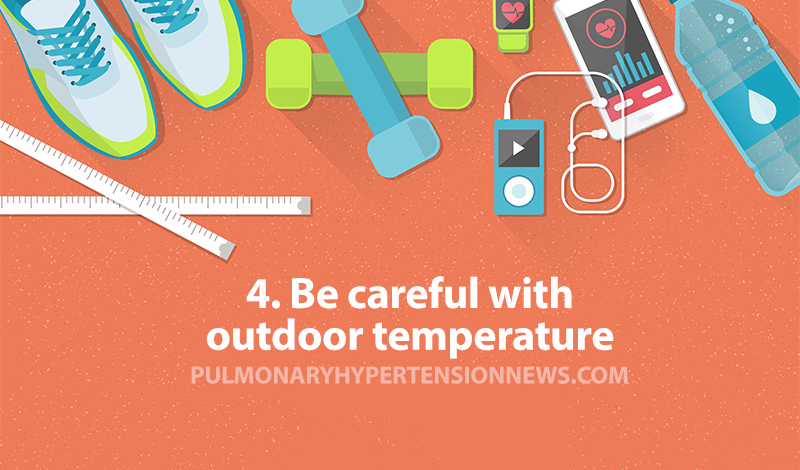
You can’t control the weather, and while you may want to exercise, you have to keep in mind that it may not be the right time for it. Be careful with the outdoor temperature to avoid colds or even dehydration.
If you can’t go outside to exercise, you can try some breathing exercises at home to make your lungs stronger. Find them here.
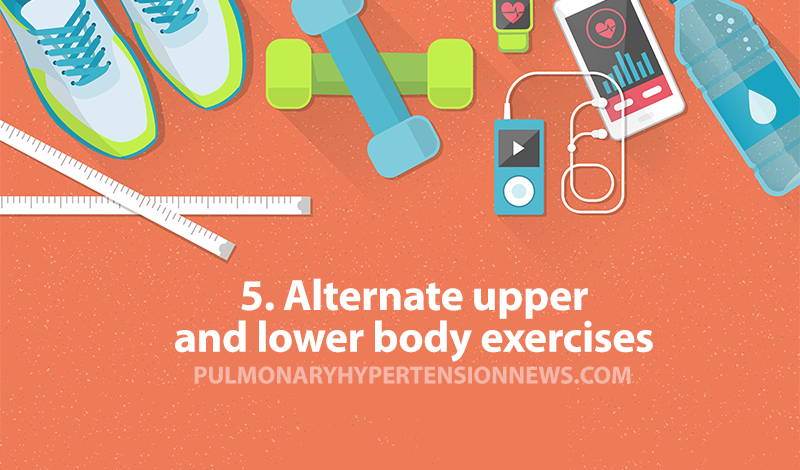
It’s probably best to avoid exercises that work your upper and lower body at the same time. Lifting small weights to strengthen your upper body is fine and leg lifts are fine, just don’t do them together. Talk to your doctor to make sure you are doing the right exercises–it’s possible your physician will tell you to avoid exercises that require you to raise your arms over your head as this makes the heart work harder.
Check out Chloe Temtchine’s tips on how to exercise when you have pulmonary hypertension.
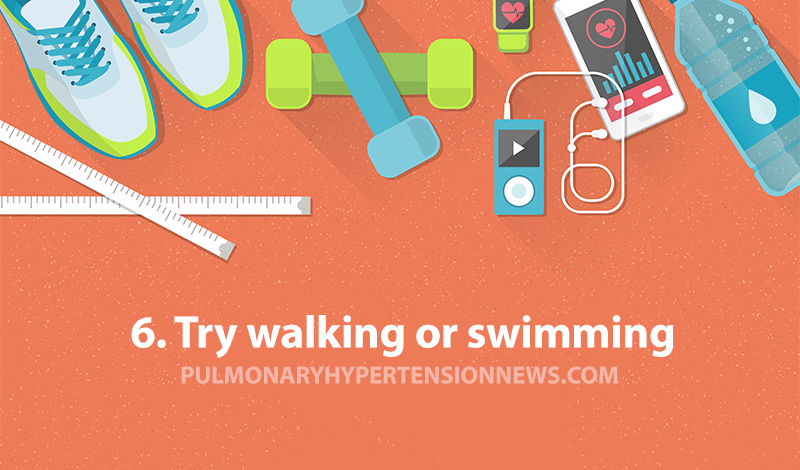
Walking or swimming are both good options for cardiovascular activity because they allow you to move and be active without taking a lot out of you.
Do you know how you can fight back your PH with some breathing exercises?
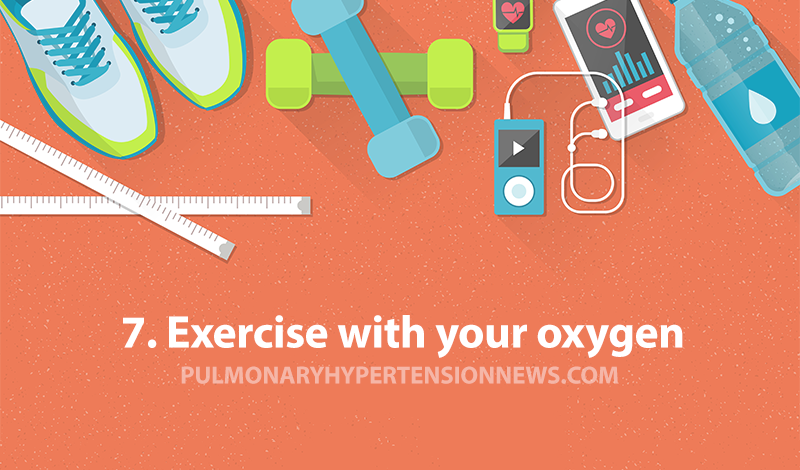
Even though it might seem extremely difficult to exercise because you’re usually out of breath, exercising while using oxygen may help. Carrying your oxygen bottle around may not be comfortable but it can be very helpful.
Want to learn more about pulmonary hypertension? Here’s a list of 10 questions to ask your doctor about PH.
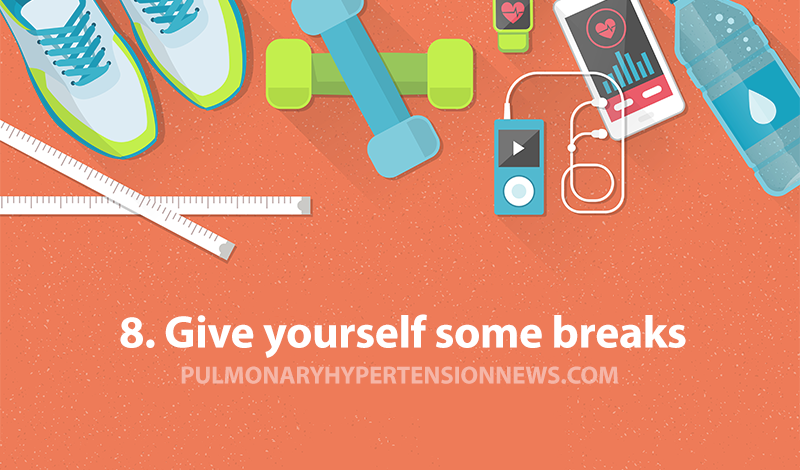
Don’t rush. Take your time and exercise carefully. Remember that you take as much as you possibly can, but don’t exceed your limits. If you’re running out of breath or getting tired very quickly, slow down and take a rest, and then, slowly start your exercise again.
Learn some daily fitness and breathing exercise to help you life better with pulmonary hypertension.
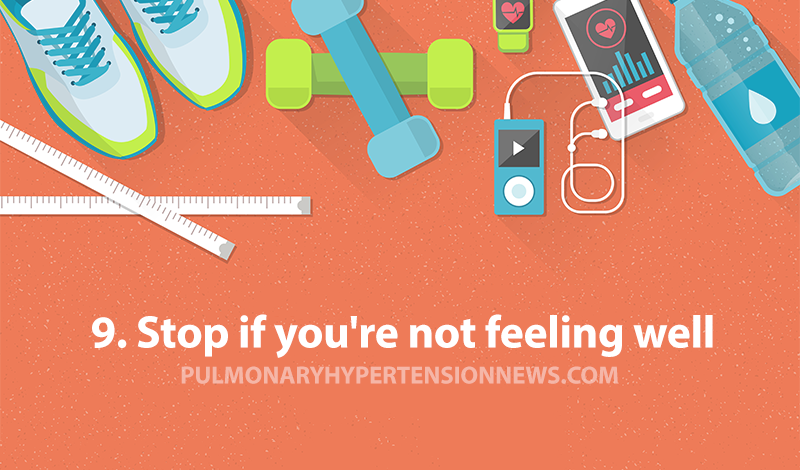
If you’re not feeling OK, stop your exercise. Pulmonary hypertension is a serious condition, it can leave you breathless when you less expect it, especially when you’re moving and putting your body through effort. If you feel unwell, stop your exercise until you’re feeling better–even if that means you’ll have to finish your training another day.
Pulmonary Hypertension News is strictly a news and information website about the disease. It does not provide medical advice, diagnosis or treatment. This content is not intended to be a substitute for professional medical advice, diagnosis, or treatment. Always seek the advice of your physician or other qualified health provider with any questions you may have regarding a medical condition. Never disregard professional medical advice or delay in seeking it because of something you have read on this website.




